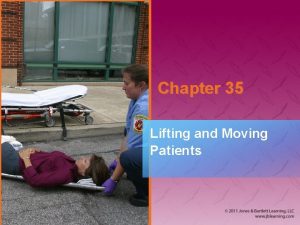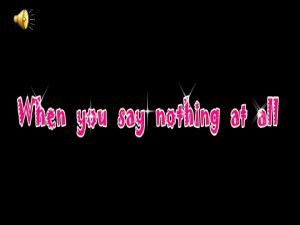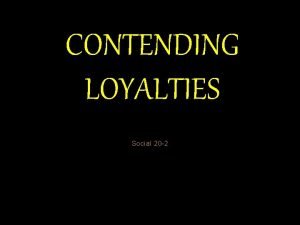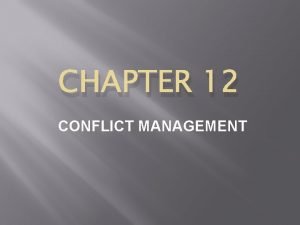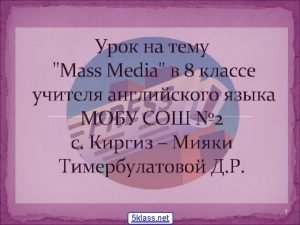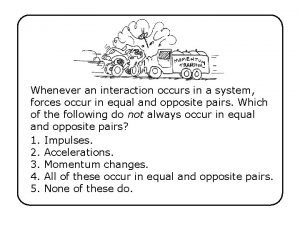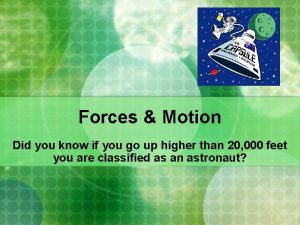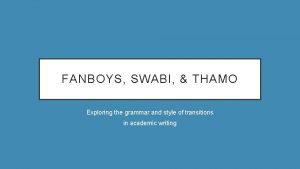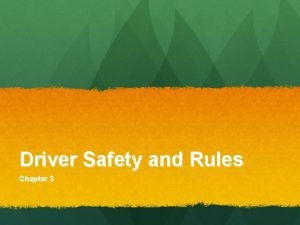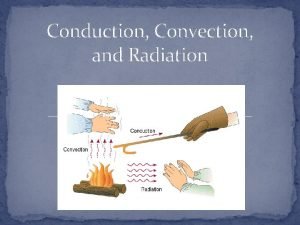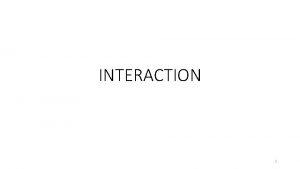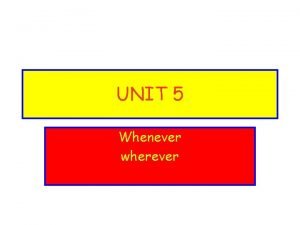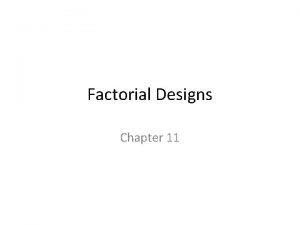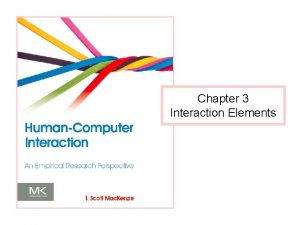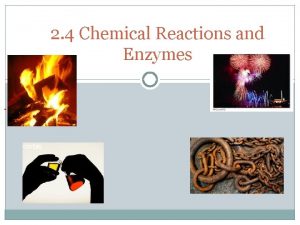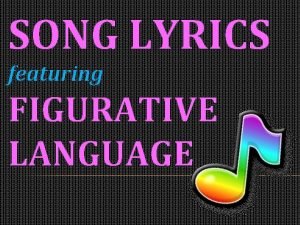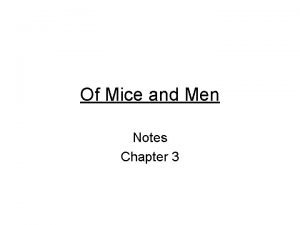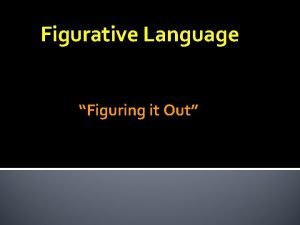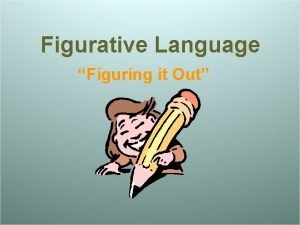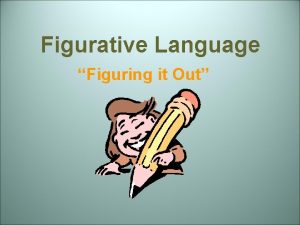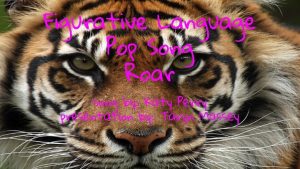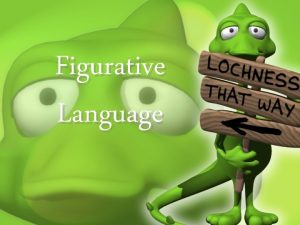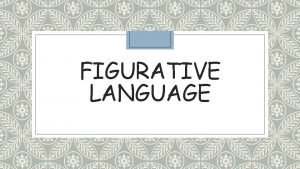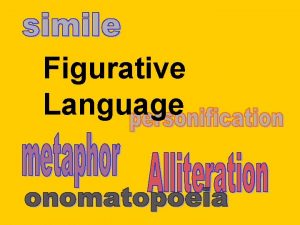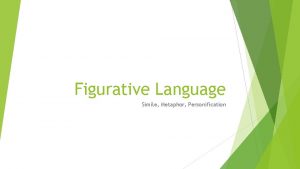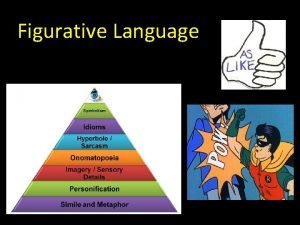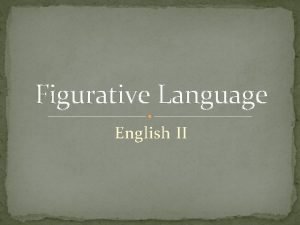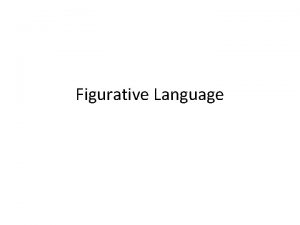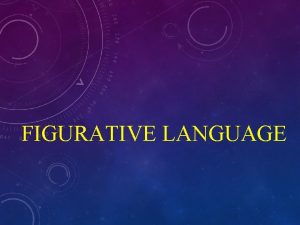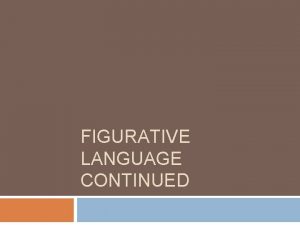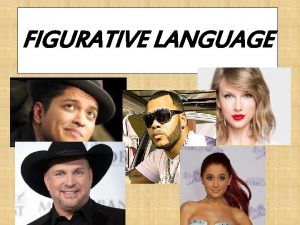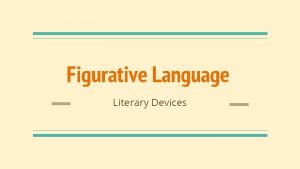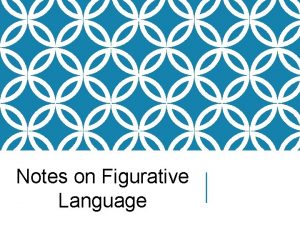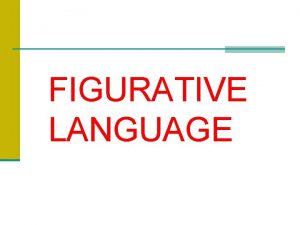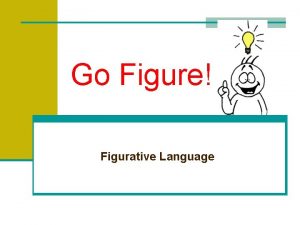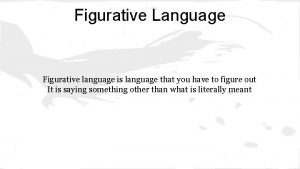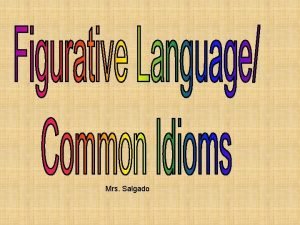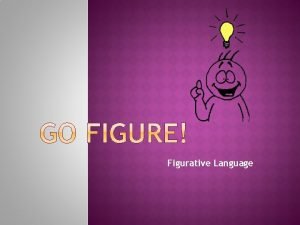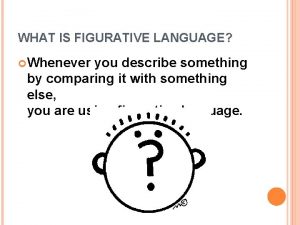Figurative Language What is figurative language Whenever you



























- Slides: 27

Figurative Language

What is figurative language? • Whenever you describe something by comparing it with something else, you are using figurative language.

Types of Figurative Language • • • Simile Metaphor Personification Alliteration Assonance Consonance Repetition Onomatopoeia Hyperbole Imagery Idioms

Simile a direct comparison between two unlike things or a way of describing something by comparing it to something else, usually using the words “like” or “as”

I am hungry as a horse. You run like a rabbit. She is happy as a clam. He is sneaky as a snake.


The road was a ribbon wrapped through the desert. The clown was a feather floating away.


The flowers danced in the wind. The friendly gates welcomed us. The hurricane’s winds are yelling while blowing outside my window.


Alliteration (continued) Alliteration: when the first sounds in words repeat. Example Peter Piper picked a pickled pepper. We lurk late. We shoot straight.

Stan the strong surfer saved several swimmers on Saturday. Tiny Tommy Thomson takes toy trucks to Timmy’s on Tuesday. Click here to read more alliterations.


Princess Kitty will kiss Timmy T. Tippers’s lips The pain may drain Drake, but maybe the weight is fake.

Consonance When consonants repeat in the middle or end *Please note that we of words. will only focus on internal consonance on the test. Vowels: a, e, i, o, u, and sometimes y. Consonants: all other letters. Examples Mammals named Sam are clammy. Curse, bless me now! With fierce tears I prey.

Repetition Repeating a word or words for effect. Example Nobody No, nobody Can make it out here alone. Alone, all alone Nobody, but nobody Can make it out here alone.


Onomatopoeia: When a word’s pronunciation imitates its sound. Examples Fizz Clink Vroom Buzz Hiss Beep Woof Boom Zip

The firecracker made a loud ka-boom! I knew the car was going to break down because it went chug… The ball went swish as it hit the net.

Hyperbole • An exaggerated statement used to heighten effect. It is not used to mislead the reader, but to emphasize a point. Example: She’s said so on several million occasions.

Imagery • Language that appeals to the senses. Descriptions of people or objects stated in terms of our senses. • Sight • Hearing • Touch • Taste • Smell

Idioms • An idiom or idiomatic expression refers to a construction of words or expression different from the ordinary meaning of the words. • The context can help you understand what an idiom means. Example: "She has a bee in her bonnet, " meaning "she is obsessed, " cannot be literally translated into another language word for word.

Idioms (continued) • An expression that carries a different meaning because of the context in which it is used – “slang” terms Examples “Up the creek without a paddle” “On top of the world” “Fingers crossed” “Shake a leg” or “Break a leg” “Put a lid on it” “It’s raining cats and dogs”

Allusion • A reference to a person, event, or place in history or in another well-known work of literature – The writer assumes will recognize the reference Example 1. Someone being as reliable as George Washington or as reliable as Benedict Arnold • Washington was reliable, Arnold was not 2. To communicate the idea of self-sacrifice by referring to Jesus • Jesus' story portrays him dying on the cross in order to save mankind (Matthew 27: 45 -56)

Irony • When a speaker intends something entirely different than what is said – Say it one way, but “secretly” mean it the opposite way Example Someone accomplishes something hard or is very successful and you say, “You’ve certainly made a mess of things. ” “It smells really good in here!” when referring to something that smells terrible.

Rhythm When words are arranged in such a way that they make a pattern or beat. Example There once was a man from Peru, Who dreamed of eating his shoe, He awoke with a fright, In the middle of the night, And found that his dream had come true! Hint: hum the words instead of saying them.

Rhyme When words have the same end sound. Happens at the beginning, end, or middle of lines. Examples Where Fair Air Bear Glare
 I will follow you wherever you ...........................
I will follow you wherever you ........................... Wheeled ambulance stretcher
Wheeled ambulance stretcher Speak right to my heart
Speak right to my heart Padi quiz 3 answers
Padi quiz 3 answers Contending nationalist loyalties in canada
Contending nationalist loyalties in canada Conflict occurs whenever
Conflict occurs whenever Whenever the weather is cold
Whenever the weather is cold An interaction occurs whenever
An interaction occurs whenever A leaping frog is an example of which type of motion
A leaping frog is an example of which type of motion Fanboys and swabis
Fanboys and swabis Whenever possible, child car safety seats should be placed
Whenever possible, child car safety seats should be placed Heat energy is transferred by conduction whenever molecules
Heat energy is transferred by conduction whenever molecules Whenever there is too little friction or traction
Whenever there is too little friction or traction An interaction occurs whenever
An interaction occurs whenever Whenever or when ever
Whenever or when ever 11factorial
11factorial An interaction occurs whenever
An interaction occurs whenever Diversatech plastics group
Diversatech plastics group A current is said to exist whenever _____.
A current is said to exist whenever _____. What is released or absorbed whenever chemical
What is released or absorbed whenever chemical Songs lyrics with figurative language
Songs lyrics with figurative language Shot me out of the sky you're my kryptonite
Shot me out of the sky you're my kryptonite Of mice and men metaphors
Of mice and men metaphors If you feel like a room without a roof figurative language
If you feel like a room without a roof figurative language Figurative language
Figurative language Don't bite the hand that feeds you figurative language
Don't bite the hand that feeds you figurative language Dinner is on the house figurative language
Dinner is on the house figurative language Katy perry songs with figurative language
Katy perry songs with figurative language

